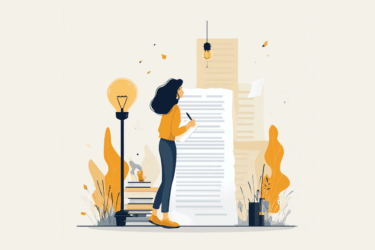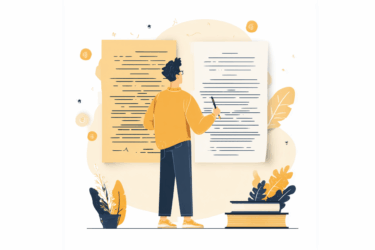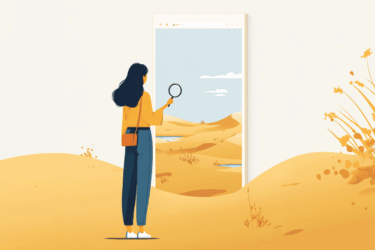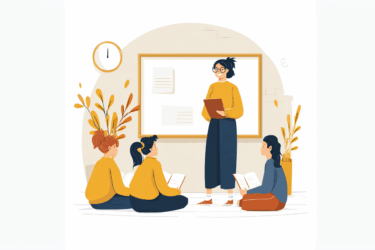Back in 2022, Chat GPT’s release stirred the internet community in general and educators in particular. The technology behind it wasn’t brand new, but the fact of how easily it empowered a chatbot to respond and write like a human was astounding.
Chat GPT by OpenAI needs just a few prompts to dwell on any topic and produce high-quality content. It went viral and caused another round of hot discussions about whether AI would replace content makers and influence academic writing. While some say that AI writing will kill college essays, others see it as a new perspective for students and higher ed. Some experts expected a positive shift from strictly following instructions to a creatively expressed point of view, maybe even in different content forms and formats, like podcasts, videos, plays, etc.
 In 2025, AI technologies have become much more common, and we have a variety of AI models and AI-empowered tools to choose from. The ethical dilemmas, however, seem to be the same as when chatbots were groundbreaking novelty. Does Chat GPT pose a real threat to academic integrity or offer room for improvement? How can one ensure AI technologies are not misused in work and studying?
In 2025, AI technologies have become much more common, and we have a variety of AI models and AI-empowered tools to choose from. The ethical dilemmas, however, seem to be the same as when chatbots were groundbreaking novelty. Does Chat GPT pose a real threat to academic integrity or offer room for improvement? How can one ensure AI technologies are not misused in work and studying?
Here at PlagiarismCheck.org, we believe that truth is somewhere in between. But we also try to get the most out of AI to make it serve for good and help you maintain academic integrity. Here’s how (by the way, we’ve been doing it for a while).
PlagiarismCheck.org: AI writing shall not pass
Chat GPT is a state-of-the-art tool, but still not a perfect one. A professor who’s seen lots of this particular student’s works will most likely say whether they wrote this very essay. Yet, sometimes it just may not feel right and may be hard to prove the piece comes from AI or someone else. To make educators’ life easier and reinforce academic integrity, in 2021 we’ve introduced the Fingerprint feature as an integral part of PlagiarismCheck.org.
So, what is Fingerprint, exactly?
To put it short, Fingerprint helps to identify the authorship of a paper or any other text document. The tool is built on the AI model that applies cutting-edge stylometry methods. It analyzes the past student’s works and allows verifying if the document matches their writing style. Check out this short video to see how it works:
When can you use Fingerprint?
The tool will come in handy to determine if it is the student who wrote the text, in case you have any doubts.
- If a student used Chat GPT or any other AI tool to generate their work, Fingerprint will flag the document.
- If a student just translated and/or paraphrased the source text, the tool will also be able to spot it.
In both cases, it is the style of the current and previous papers that will be the key factor in defining the authorship. Thus, Fingerprint helps to preserve academic integrity even in case of the most intricate cheating attempts. In fact, it fights AI writing with AI itself. What an irony.
What else can PlagiarismCheck.org do to minimize AI threats?
PlagiarismCheck.org has been always focusing at three things: academic integrity, teacher experience, and the latest technology advancements. The latter covers monitoring what’s going on in the world of artificial intelligence and machine learning, GPT-4.5 included. To help professors eliminate next-level cheating attempts, the PlagiarismCheck.org team continues to:
- Study the cases of AI-generated content. As the neural network grows smarter, we need to extend our toolkit to be able to spot the texts produced by it. That’s why we also look for alternative AI writing detection methods.
- Welcome writers, media, startups, teachers, and higher ed institutions to test our solutions so that we could improve them and make them more convenient. You can also develop policies to regulate cases when we confirm that the text wasn’t written by this particular person.
- Cherish collaboration with other tech products, especially those that use GPT-4.5. Our primary goal is to prevent this technology from endangering higher education.
So, if you are open to cooperation on any of those activities, be sure to get in touch with us.

What’s next?
We’ll keep our finger on the pulse of AI, Chat GPT, and other tech developments, just like we did before. Better safe than sorry, although we agree with lots of professors that artificial intelligence can’t fully replace human writing. At least, not now. But we also agree it’s important to take into account different scenarios. That’s why we’ll continue releasing new features to help you define original writing and withstand possible AI-driven challenges.






